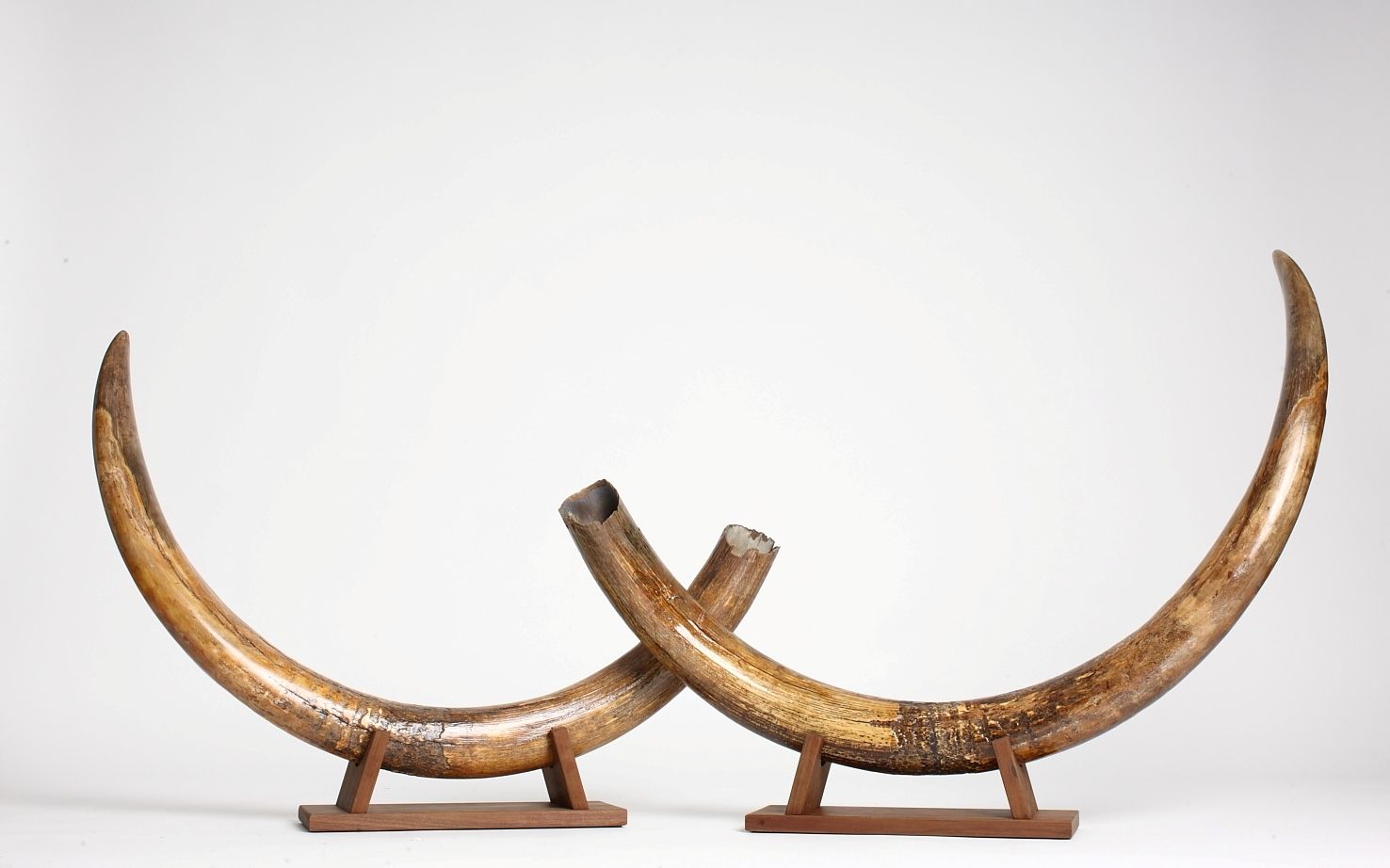
Natural vs Restored Mammoth Tusks
Our customers often ask about the difference between natural and restored mammoth tusks. This is a good question worth an adequate answer.
All tusks, fragments and various pieces of mammoth ivory which have been recovered from the Siberian permafrost are initially in a completely raw, untreated and natural condition.
When unearthed, all pieces contain a certain amount of moisture in the core and are covered in thousand-year-old mud and dirt. The usual multitude of magnificent patterns and colours of mammoth ivory is – if at all – barely visible.
It is extremely rare to find a complete tusk in a good condition – this is an exception to the rule. The rule is that most of the time one finds rotten pieces, broken tusks, cracked fragments of bark etc.
Recently discovered tusks must first be cleaned of mud and dirt and then dried in controlled climatic conditions. The process of drying usually takes a few years. The length of the drying process is determined by the amount of moisture contained in each particular tusk. The level of moisture depends on the predominant climatic conditions of the particular area in which each particular piece was found. The more moisture is present, the longer the process of drying.
Once dried out, the mammoth tusk may require restoration depending on its individual condition. We personally inspect every single piece in order to make this decision. From here, two paths unfold:
A: No restoration is required, if the initial natural condition of a dry mammoth tusk is of top-quality. This means that the tusk is wholly intact, has no major cracks, no dents, no broken bits, no rotten sections etc. This is an exception to the rule as written above.
B: Restoration is necessary to some degree, if a particular tusk shows any of the following: Major cracks or dents, hollow sections in the core, rotten sections, broken bits and the like. Some tusks require less work, some require more work – this depends on the condition of each piece. Restored mammoth tusks usually had some cracks which have been filled with epoxy. Some of the tusks require stabilisation from the inside. This means that these tusks are being stabilised with a specifically prepared resin in a vacuum chamber and then again in a pressure chamber. Afterwards they are covered with a layer of shiny polish. The resulting colouration of the outer layer of bark is a mix of natural and artificial colours.
If you have any further questions or require further explanations, please email us: info@arcticantiques.com